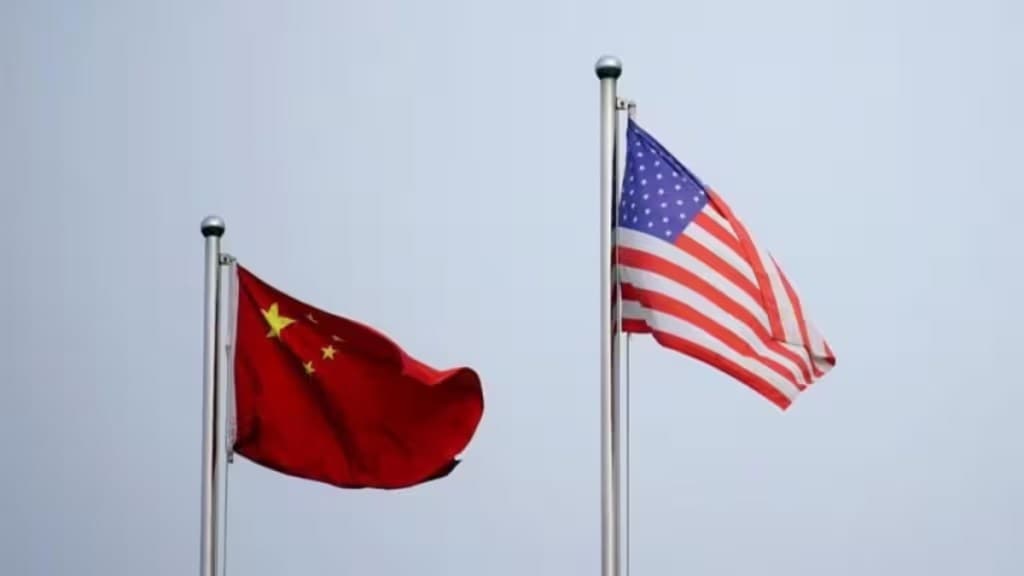The ongoing trade war between the United States and China has caused significant global economic turbulence, influencing everything from tariffs on goods to the financial markets and international relations. What started as a series of punitive measures aimed at addressing trade imbalances has escalated into a multifaceted dispute that continues to reshape international commerce.
President Donald Trump has imposed new 10 percent tariffs on China, prompting retaliation threats from Beijing. According to reports Chinese officials have condemned the move as a ‘Cold War mentality,’ and have warned that this move could destabilize global trade.
Also, China has accused the US of using the fentanyl crisis as a tool to further worsen the trade war. Reports indicate that Chinese authorities have vowed countermeasures, and claimed the US is shifting blame for its opioid crisis.
Key factors such as tariffs, financial instruments like US Treasury bonds, and geopolitical tensions now dominate the landscape. For countries like India, the trade war has also created both challenges and opportunities.
It has been reported previously in response to tariffs last month Beijing had announced export controls on rare minerals including tungsten and other specialty metals. These metals are very critical and are used in aerospace, defence, electronics, automotive as well as energy sectors.
In December 2024, it had already banned the sale of dual-use goods and critical minerals to the US. Earlier that year, according to reports, China had already restricted overseas sales of gallium and germanium. These two metals are very important for semiconductor, electric vehicle as well as telecommunications and later it imposed export curbs on certain types of graphite.
Trump declares tariffs war on China — Background
One of the primary reasons for his decision to impose tariffs on Chinese goods during his first term in 2018 was to reduce the United States substantial trade deficit with China. Trump argued that the US was at an economic disadvantage, importing far more from China than it was able to export, which he saw as disadvantageous to American workers and industries. The administration sought to rectify this by imposing tariffs on Chinese imports in a bid to protect US manufacturing jobs.
Additionally, according to information available in the public domain, Trump and his economic advisors have accused China of engaging in unfair trade practices, including intellectual property theft, forced technology transfers, and the use of state subsidies to prop up Chinese companies. These practices were perceived as violations of international trade norms, prompting the US to take action. By imposing tariffs, Trump aims to pressure China into making concessions on trade policies and intellectual property protections.
Financial Instruments in the Trade War
In Trump 2.0 beyond tariffs, the US-China trade war has also involved financial measures, particularly the manipulation of key assets like gold and US Treasury bonds. China, as one of the largest foreign holders of US debt, has used its stockpile of US Treasury bonds as a potential lever in the trade war. As tensions have mounted there are discussions around China selling off its vast reserves of US Treasuries, which could put upward pressure on US bond yields and destabilize global financial markets.
In 2024, China’s holdings of US debt were estimated at over $759 billion in 2024. A large-scale sell-off of US Treasuries could lead to an increase in US interest rates, raising borrowing costs for the US government and potentially triggering financial instability. Though China has already been reducing its direct holdings in recent years, its strategic decisions regarding US Treasury bonds remain an important factor in the broader economic conflict.
In addition, the gold market has been a point of contention. According to various reports, the US refusal to return gold stored in US vaults to China has worsened relations between the two countries. Beijing’s growing demand for gold, coupled with its increasing reserves, reflects its strategy to safeguard against the volatility induced by the trade war.
Impact on India
As China faced tariffs and trade restrictions from the United States, many global companies sought other suppliers. India, with its large and diverse economy, was quick to benefit from this trade diversion. The Indian government reported a significant rise in exports to the US, particularly in sectors such as electronics, textiles, and chemicals.
According to a government official, Indian exporters started receiving higher orders amid the uncertainty over Chinese goods facing new tariffs.
Indian electronics, in particular, saw a significant boost. A report by Oxford Economics highlighted that India’s share of US electronics imports rose sharply from 2017 to 2023, especially in the telecommunications sector. India’s growing role as a manufacturing hub for companies like Apple has contributed to this upward trajectory.
However, India’s gains are not without challenges. While India is benefiting from trade diversion, its share in more advanced technology sectors such as semiconductor manufacturing remains relatively small compared to competitors like South Korea and Taiwan. Moreover, India continues to lag behind in terms of global competitiveness, with key products like smartphones still largely dependent on Chinese components.
As the US-China trade war continues, the global economic landscape remains in flux. The trade tensions between the two largest economies in the world have led to heightened uncertainty in international markets. China’s growing influence over key commodities, such as rare earth metals and electronics, and the potential destabilizing effects of a large-scale US Treasury bond sell-off, suggest that the conflict is far from over.

